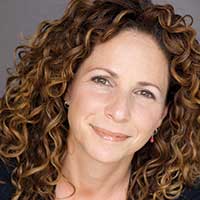Imagination.
We all have it. We all use it. If I tell you to imagine a chocolate cupcake popping out of this page, your mind's eye can immediately see the shape and texture of it. You might even smell it and taste it in that same split second.
It's just what happens.
We lucky humans have this innate ability to imagine...
Like any muscle in the body, the part of our brain that solves problems, critically thinks and creates opportunities when confronted by new situations is fueled by imagination. As afterschool professionals, how can we ensure our kids are developing this magnificent gift of imagination?
There's no vitamin for it—but feeding imagination is as easy as pouring milk into a glass. In this case, life is the container: ready for what we all choose to put into it.
My passion for nurturing imagination—and, by association, creativity—emboldened me to create the Write Brain World I live to sustain and expand. I could never have imagined that the tiny seed of ... wait.
Scratch that.
I did imagine this. And because I did, it somehow came to fruition.
I believe that imagination is directly connected to manifesting success and happiness.
Storytelling and Creative Writing: Imagination in Action
We live in a digital age, where our children are confronted with pre-packaged stimuli every day. Here are some practical tips to help all of us encourage "original thought" in our kids through activities that spark the imagination.
Fantasy: What if prompts are a great way to ask a child to tell a story. What if you lived on the moon? What if you were 10 feet tall and a famous opera singer or rapper? Asking questions like these allow for make-believe time. At any age, imagining a fantasy scenario is so important. It opens up the possibility for ideas to evolve and grow—in our minds and in real life, too.
Life, Observed: No matter where you are, engage your students with their environment. Have them look around. Ask questions such as, What kinds of kids used to learn here? or Can you imagine how this building was constructed? What made-up creatures might inhabit this area if you could paint them into this setting?
Story Journaling: Create a story journal for your class or group that always sits in plain sight. Start a fictional story by writing one or two sentences onto the first page. Then invite every student to take it when they are inspired to contribute to a collaborative tale you will build as a class in afterschool, over some amount of time. Make creative writing a part of your out-of-school-time culture and schedule the days your group will read the evolving story aloud. Your students will grow into storytellers, with rich imaginations rooted in the practice and sharing they did in your program.
Let's imagine the next generations of leaders, artists, educators, community builders, entrepreneurs, parents, thinkers and feelers. Now, let's help them imagine, too!
 Written by Meredith Scott Lynn, founder and CEO, WRiTE BRAiN Books.
Written by Meredith Scott Lynn, founder and CEO, WRiTE BRAiN Books.




